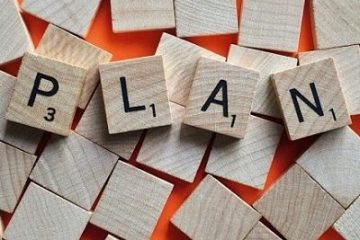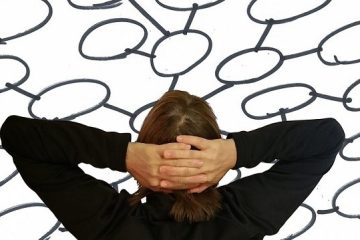
HOW COMMON ARE SLEEP PROBLEMS AFTER CONCUSSION?
Sleep-wake disturbances are one of the most prevalent and persistent sequalae of traumatic brain injury (TBI). In mild TBI, about 33% report SWD within the first 10 days after injury, up to 50% at 6 weeks and up to 40% at one year. In comparison, 25% of adults in the general population are dissatisfied with their sleep. It is interesting to note that in the past few decades, sleep problems have been increasing, likely as a result of higher work demands, increased shift and night work, and excessive environmental stimuli (computers, cell phones, scree time, etc.).

WHAT ARE COMMON SLEEP COMPLAINTS AFTER CONCUSSION?
Sleep-wake disturbances are one of the most prevalent and persistent sequalae of traumatic brain injury (TBI). In mild TBI, about 33% report SWD within the first 10 days after injury, up to 50% at 6 weeks and up to 40% at one year. In comparison, 25% of adults in the general population are dissatisfied with their sleep. It is interesting to note that in the past few decades, sleep problems have been increasing, likely as a result of higher work demands, increased shift and night work, and excessive environmental stimuli (computers, cell phones, scree time, etc.).

WHAT ARE COMMON SLEEP DISORDERS AFTER TBI?
Some sleep disorders are more common after TBI, including:
1. CIRCADIAN RHYTHM SLEEP-WAKE DISORDER (CRSWD)
This happens when there is a lag between your internal clock (e.g., your sleep-wake cycle) and the environment 24-h clock. Imagine your internal clock runs on Vancouver time but you live in Toronto! It affects less than 1% of the general population (common in teenage years) but preliminary evidence shows that it is more common after TBI. Patients usually complain of insomnia and daytime sleepiness. Which explains why up to 36% of patients labelled with insomnia post-TBI actually have CRSWD instead.
2. POST-TRAUMATIC HYPERSOMNIA
About 30% of all TBI patients experience sleeping more (at night and/or during the day) compared to their pre-concussion baseline sleep need. Some also have hypersomnia as well as excessive daytime sleepiness which is called pleiosomnia. Note that sleepiness is not the same as fatigue. Sleepiness is the inability to stay awake and alert during the day, and falling asleep at inappropriate times (e.g., while watching TV) whereas fatigue can be defined as the inability to pursue an active goal.
3. SLEEP-RELATED BREATHING DISORDERS
Only 2% of the general population suffers from sleep apnea whereas this number rises to 25% in the TBI population. It is most common in severe TBI. There are two types of sleep apnea: obstructive and central. In obstructive sleep apnea, the collapse of the airways (due to sedentary lifestyle, obesity, stress, etc.) causes periods of no breathing (apnea) or abnormally slow or shallow breathing (hypopnea). In central sleep apnea (a rare condition that is however more common in severe TBI) disruption in the brain signalling the muscles that control breathing causes hypo/apnea. Patients suffering from sleep apnea often complaints of frequent awakenings, non-restorative and/or agitated sleep, snoring, and daytime sleepiness
4. NARCOLEPSY
Narcolepsy is a very rare disorder of the sleep-wake control. It affects 0.05% of the general population compared to 4% of brain injury patients, mostly severe TBI. Narcolepsy is characterized by:
- Sleep attacks: More than just daytime sleepiness, these patients can rapidly doze off with little warming, often at inappropriate time.
- Cataplexy: Emotionally-triggered transient muscle weakness, mostly by strong positive emotions like laughter, joking, excitement, often causing facial weakness or falls.
- Sleep paralysis: Complete inability to move for 1-2 minutes immediately after awakening.
- Hypnagogic hallucinations. Vivid, often frightening visual, tactile or auditory hallucinations that occur as the patient is falling asleep or awakening.
5. INSOMNIA
The Diagnostic and Statistical Manual of Mental Disorders (DSM-5) defines insomnia as follow:
- Dissatisfaction with sleep quantity or quality
- One or more of the following:
- Difficulty initiating sleep (10-30min considered normal)
- Difficulty maintaining sleep (frequent awakenings)
- Early morning awakenings
- Non restorative sleep
- Impaired daytime functioning
- At least 3 nights per week for at least 3 months
- Despite an adequate opportunity for sleep
Insomnia is more prevalent in mild TBI compared with moderate-severe TBI. Chronic insomnia is 3 times more common after a concussion compared to the general population (30% versus 10%). About another 20% of TBI patients have symptoms of insomnia but do not fulfil all the clinical diagnostic criteria, raising the toll of insomniac patients post-concussion to about 50%. A retrospective study found that 65% and 25% of mTBI patients complained of insomnia symptoms at 2 years and 5 years post-injury respectively.

WHAT HAPPENS IN THE BRAIN TO CAUSE SWD POST-CONCUSSION?
There are many hypotheses about what happens in the brain post-concussion and how it relates to sleep-wake regulation.
1. OXERIN DEFICIENCY
Oxerin (or hypocretin) is a neuropeptide with a strong wake-promoting effect. Patients with type 1 narcolepsy are deficient in oxerin. Oxerin levels were observed to be low in cerebrospinal fluid of 95% of moderate to severe TBI patients during the acute phase. However orerxin deficiency is unlikely to explain it all since CSF oxerin levels go back to baseline for most in the chronic phase.
2. MELATONIN DISRUPTION
Melatonin is a hormone produced by the pineal gland and released in the bloodstream following a circadian rhythm. It regulates the sleep-wake cycle. After age 70, the pineal gland is often calcified which can cause age-associated insomnia. Several studies have showed that melatonin secretion may be disrupted by TBI. However, so far, research shows that taking exogenous, synthetic melatonin is not helpful after TBI to regulate sleep. Meta-analysis showed synthetic melatonin decreases sleep onset (time to fall asleep) by only 7 min on average in insomnia patients but does not help with maintain sleep overnight.
3. STRUCTURAL BRAIN CHANGES
Abnormal neuroimaging is found in only a minority of patients with mild TBI but imaging may miss more subtle damage (like diffuse axonal injury, microhemorrhages, etc.) which could affect sleep-wake and circadian rhythms. On SPECT or PET scans, deficits in the thalamus region bordering the frontal lobe are common for mTBI, this is an important area of the brain that helps promote sleep and maintain wakefulness. Perhaps damage to other brain structures regulating the sleep-wake cycle (e.g., brain stem, reticular activating system, ventral periaqueductal gray, locus coeruleus, basal forebrain, tuberomammillary nucleus, etc.) explain SWD post-TBI but have yet to be studied in TBI.

WHAT ELSE CAN TRIGGER SLEEP PROBLEMS POST-CONCUSSION?
Many other factors can trigger or contribute to sleep problems after a concussion, including:
- Other health problems, medication side effects, pain
- Psychological factors (e.g., anxiety, depression, post-traumatic stress disorder, etc.), stress
- Environmental factors (e.g., suboptimal sleep environment)
- Personal or familial history of sleep problems
- Lifestyle changes (e.g., being off work, less physical activity, less social activities, change in sleep habits, etc.)
WHO IS AT RISK OF SLEEP PROBLEMS POST-CONCUSSION?
There is limited data on risk factors for SWD post TBI. Female gender, poor sleep quality pre-concussion, and symptoms of poor sleep or poor cognition within 2 weeks post-concussion are three factors that have however been identified as risk factors for persistent SWD post-concussion. In general, female patients are twice as likely to have insomnia than male patients.

WHY IS IT IMPORTANT TO ADDRESS SLEEP PROBLEMS POST-CONCUSSION?
SWD are linked to a range of negative functional outcomes in mTBI, including:
- compromise concussion recovery,
- reduce quality of life,
- post-concussion symptoms (SWD can be the cause or trigger) like depression, anxiety, irritability, emotional distress, fatigue, cognitive deficits and pain.
Patients with insomnia are 5 times more likely to also suffer from anxiety or depression. It is frequently associated with impulse-control issues and substance misuse disorder. In teenagers, insomnia is known to be highly chronic, that is to say adolescents with untreated insomnia are likely to become adults with insomnia. Spontaneous recovery from insomnia is not likely. Screening for SWD in an early phase can be beneficial because interventions can be very effective and improve overall outcome.

HOW ARE SLEEP PROBLEMS POST-CONCUSSION DIAGNOSED?
Insomnia (see criteria above) and circadian rhythm sleep-wake disorders are diagnoses made clinically based on the sleep history and sleep diary. Polysomnography (sleep study) is not useful unless another underlying sleep disorder is suspected.
Sleep related breathing disorders must be diagnosed by polysomnography to assess the number and severity of apneic episodes.
Narcolepsy must be diagnosed with a sleep study and a multiple sleep latency test. Other causes must be ruled out (e.g., sleep apnea, periodic limb movement disorder, sedating medications, insufficient sleep, etc.).
Post-traumatic hypersomnia and pleisomnia are diagnoses of exclusion meaning that other sleep disorders and/or causes must be ruled out (e.g., sleep apnea, side effect from sedating medication).

WHAT TREATMENTS CAN HELP WITH SLEEP PROBLEMS POST-CONCUSSION?
Therapeutic options vary depending on the diagnosis. For example, most patients with obstructive sleep apnea require the use of a CPAP machine overnight. Your health care provide will be able to elaborate a specific treatment plan according to your sleep diagnoses and factors.
The following basic sleep principles can help you lay down the foundation to better, longer sleep:
- Go to bed when sleepy, get up if you cannot sleep.
- Go to bed every night at the same time and get out of bed every day at the same time.
- Keep the bed for sleeping & sexual activity only.
- Avoid making up for a “bad” night of sleep by going to bed too early the next day, sleeping in or taking long naps to “catch up”.
- Have a regular, quiet bedtime routine.
- Avoid watching the clock.
- Practice regularly moderate to vigorous exercise. Exercise during the day and avoid vigorous exercise 4h before bedtime.
- Keep your bedroom cool (18.5 ºC), dark, quiet, comfortable and free of distractions (especially screens of any type).
Cognitive behavioural therapy for insomnia (CBT-i) is a brief, multimodal, evidence-based first line therapy for insomnia. It is as effective as sleeping pills in the short term, and even more in the long term.
Melatonin is a popular over-the-counter sleep fad right now. Its use in TBI patients is equivocal and not recommended. Melatonin can however be indicated for other sleep problems including circadian rhythm sleep-wake disorders, shift work sleep disorder, jet lag, age-associated insomnia and insomnia in migraine patients. In most cases a low physiologic, intermittent dose can be recommended. Melatonin therapy should ideally be taken under the supervision of an experienced physician or nurse practitioner as most over-the-counter formulation provide excessive dosing which can elevate the plasma concentration from 3 to 60 times their normal peak value! A melatonin dose of 1mg or greater is considered a high. Side effects of high dose melatonin include drowsiness, dizziness, headache, nausea, nightmares, daytime sleepiness, impaired mental and/or physical performance, hypothermia and elevated prolactin. Bottom line: talk to your doctor before using melatonin.
Last update: January 2024
